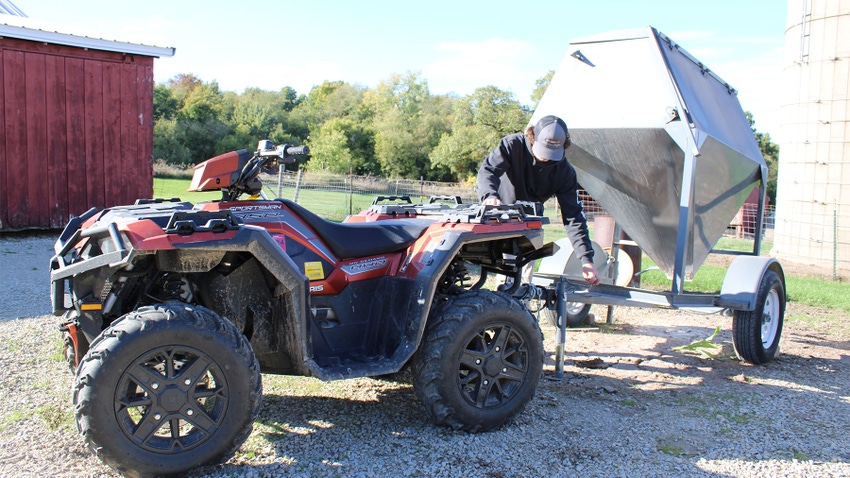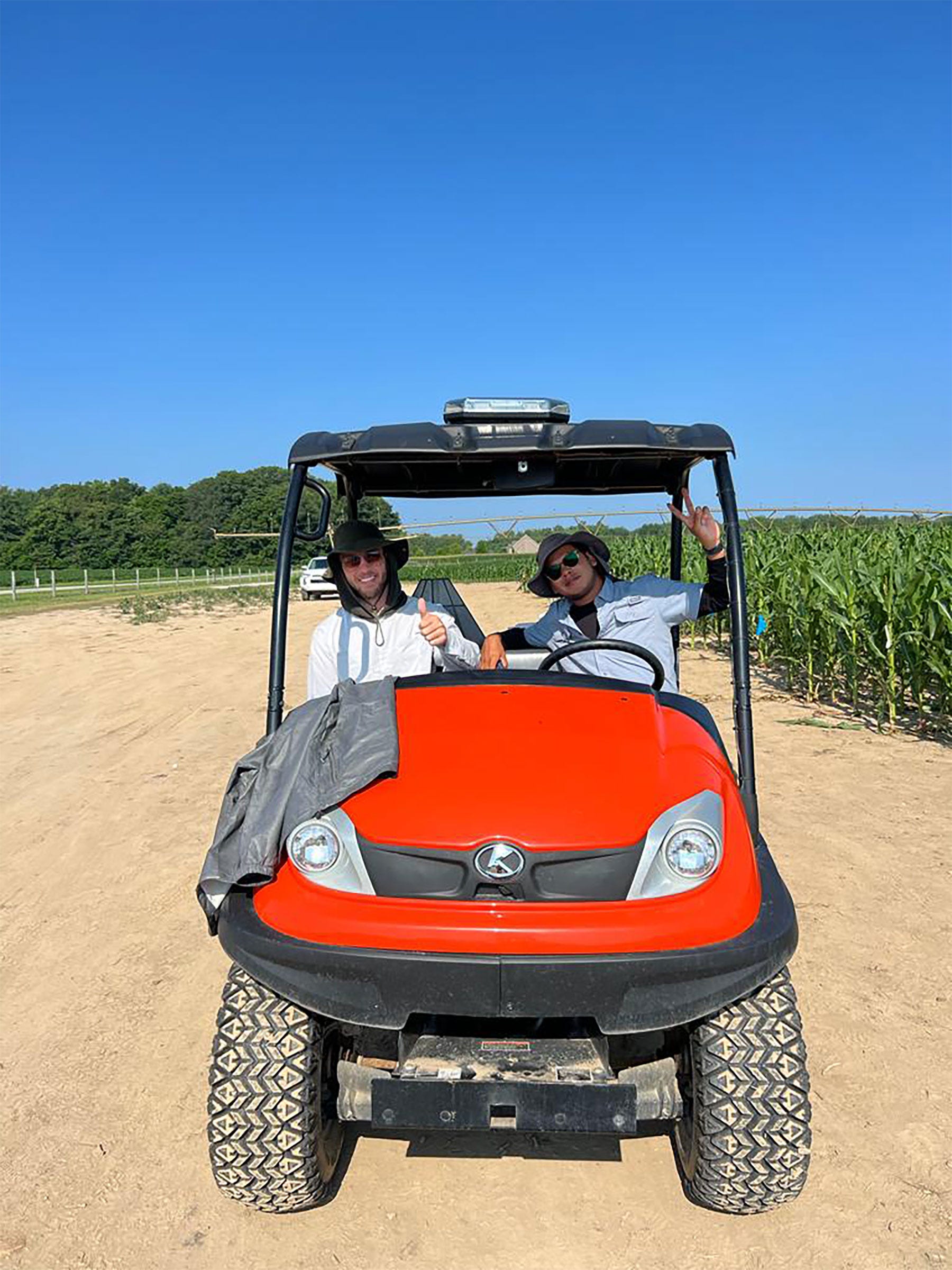December 7, 2023

ATVs and UTVs are helpful tools on the farm, but only if they’re operated safely and correctly. Keeping up with evolving rules and safety measures can be difficult, but having that knowledge prevents dangerous situations.
Understanding where these vehicles can be operated is where most of the confusion lies, according to Roger Tormoehlen, professor in the Department of Agricultural and Biological Engineering at Purdue.
“I think what’s confusing is where they can ride them, like roads and so forth,” Tormoehlen says. “That’s confusing and varies from county to county and state to state.”
It is up to operators to check the website for their Department of Natural Resources or local law enforcement agency to determine where they can ride. One rule that is consistent in all areas is that ATVs and UTVs are not allowed to operate on state roads.
Further, some counties only allow these vehicles to be operated for agricultural purposes on city and county roads. In some cases, operators are allowed to drive directly across a road to cross it.
Additional ATV, UTV rules
Here is another key rule for ATV and UTV operation: Any operator driving on the road must be at least 16 years old and have a driver’s license. People under 14 years old can operate an off-road vehicle only if supervised by someone over 18 years old, or if riding on property owned by their parent or legal guardian.
Riders under 18 years old must wear a helmet when operating an ATV, whether on or off the road. This rule does not extend to UTVs that have steering wheels and roll bars. Tormoehlen recommends that ATV operators of all ages wear a helmet.
“The most serious injuries that we see are head-related, where people get thrown off the ATV or the ATV rolls on them,” Tormoehlen adds. “We emphasize that you should never be on an ATV without a helmet.”
In Indiana, ATVs and UTVs must be registered with the Bureau of Motor Vehicles. That rule applies to all ATVs and UTVs in the state, regardless of where they are being operated. Also, these vehicles need to have headlights and taillights for operating when it’s dark.

KNOW THE DIFFERENCE: Felipe Bresolin and Kenan Chow wait in their Kubota until it’s needed in the popcorn plot. They do not need helmets, like they would with an ATV, because this UTV has a roll bar. (Courtesy of Kenan Chow)
Putting safety first
Aside from the rules and regulations set forth for safe ATV and UTV operation, Tormoehlen advises operators follow some additional safety measures. Though technically a rule with ATVs, he emphasizes the point that there should only ever be one person on an ATV at any given time.
“The ATV is only designed for one person,” Tormoehlen says. “We have that large saddle seat, and it gives the impression that more people can sit on it because it’s a big seat.”
However, that design is intended to give the operator space to move with the ATV as they drive. This includes giving the driver room to lean into turns and shift their weight when going up and down hills.
“If you have two people on there, one thing is, you don’t have room to move around on the seat,” Tormoehlen explains. “The other thing is, if you lean into the turn and then the other person does something else, it counteracts what you’re doing. It changes the dynamics of the machine when you have that second person on there.”
Select right-size ATV
Selecting the correct ATV size for young operators is another safety measure that Tormoehlen finds may be overlooked.
“You must fit the machine,” he says. “Are you physically the right size to operate the machine in a safe manner?”
Tormoehlen explains that some ATV manufacturers correlate engine size with age, but that may not always be accurate. He says National 4-H recently put out guidelines based on recommendations from the ATV Safety Institute for selecting the correct ATV size depending on physical size, not age.
“There’s a tendency to buy one that’s larger that works for Mom and Dad or an older brother or sister, and a younger person hops on who just isn’t quite ready yet physically to safely operate the machine,” he explains.
One additional safety measure Tormoehlen shares is wearing the correct clothing for operating these vehicles. He recommends wearing long pants, long-sleeve shirts and gloves to prevent any cuts or scrapes. Long pants can also protect from the heat of the engine.
About the Author(s)
You May Also Like






